1. Strategy
1.1. Streamlined system for coordination of care
1.1.1. Information platform to allow interaction of other organizations' information to flow to and from
1.1.1.1. Reduce lag in wait times for results
1.1.1.1.1. Feedback loop (Meadows & Wright, 2008)
1.1.1.2. Decrease clerical errors
1.1.1.3. Decrease in lost results or documentation
1.1.2. Subsystems to have access to patient medical records
1.1.2.1. Pharmacuticals
1.1.2.2. Dr. Orders
1.1.2.3. Therapy recommendations
1.1.2.4. Diagnostic and blood work
1.1.2.5. Patient history
1.1.3. Team-based care with patient at center
2. Design
2.1. Human-Centered Design
2.1.1. Engage end-users in co-creation: patients, caregivers, providers, staff
2.1.1.1. Build empathy
2.1.1.2. Define the problem
2.1.1.3. Ideate solutions
2.1.1.4. Prototype & Test
2.1.1.5. Iterate and continuously cycle
2.1.1.6. Mitigate resistance and avoid costly errors
2.2. Technology Requirements
2.2.1. Mobility
2.2.2. Connectivity
2.2.3. Integratio with EHR Systems
3. Outcome
3.1. Increased Access to care, decrease in barriers to care
3.2. Increased education/awareness of conditions
3.3. Higher quality of patient care
3.4. Life longevity
3.5. Patient satisfaction
3.6. Reduced hospital readmissions
3.7. Decreased costs
3.8. Quantitative and Qualitative
3.8.1. Synthesize above outcomes to assess efficacy
4. Broader Healthcare Context
4.1. Affordable Care Act
4.1.1. Medicare payment as lever to change system
4.1.1.1. pay for performance
4.1.1.2. value-based care
4.1.1.3. bundled payments
4.1.1.4. Medicare Innovation projects
4.1.2. Medicaid Expansion
4.1.2.1. Medicare & Medicaid dual eligible patients
4.1.3. Accountable Care Organizations
4.2. Consolidations and Mergers
4.2.1. Need to coordinate & integrate care
4.3. Advances in medicine and technology
4.3.1. staff & tech moving out of hospitals & clinics, into communities, homes
4.3.2. longer life spans
4.3.3. new entrants in healthcare market
4.3.3.1. retail pharmacies
4.3.3.2. tech companies
4.3.3.3. retail stores
4.4. Demographic Shifts
4.4.1. aging Baby Boom generation
4.4.1.1. more patients over age 65 living longer
5. References
5.1. Albert, M., McCaig, L., & Ashman, J. (2013). Emergency department visits by persons aged 65 and over: United States, 2009-2010. Retrieved from http://www.cdc.gov/nchs/data/databriefs/db130.pdf
5.2. Brown, B. [The RSA]. (2013, December 10). Brené Brown on empathy [Video file]. Retrieved from https://www.youtube.com/watch?v=1Evwgu369Jw
5.3. Centers for Disease Control and Prevention. (2013). The state of aging & health in America 2013. US Department of Health and Human Services. Retrieved from http://www.cdc.gov/aging/pdf/state-aging-health-in-america-2013.pdf
5.4. Meadows, D. (2008). Thinking in systems: A primer. White River Junction, VT: Chelsea Green Publishing.
5.5. Zafar Chaudry, M., & Thomas J. Handler, M. (2015). Healthcare CIOs Must Focus Efforts on Remote Patient Monitoring to Improve Health Outcomes. Stamford: Gartner.
6. Problem (Background & Significance)
6.1. Patient Population
6.1.1. Geriatric Population, >65 years old
6.1.1.1. Growing segment of population
6.1.1.2. Unable to go to doctors appointments/homebound
6.2. Sick Care versus Managed Care
6.2.1. High readmission rates due to mismanaged RX , lack of coordination of care, etc.
6.2.1.1. Medically-compromised
6.2.1.2. Poly-pharmacy drug regimen
6.3. Disproportionate amount of cost in healthcare
6.3.1. Health Literacy
6.3.1.1. Health Insurance
6.3.1.2. Denied Medical Claims
7. Subsystems within senior citizens' continuum of care
7.1. Team Based Care
7.1.1. MD
7.1.1.1. Primary Care Physician
7.1.2. Nursing/Medical Assistants
7.1.3. Social Work
7.1.4. Pharmacist
7.1.5. Health Care Insurance
7.1.5.1. Public
7.1.5.1.1. Medicare
7.1.5.1.2. Medicaid
7.1.5.1.3. State Supplemental Programs (managed care programs)
7.1.5.2. Private
7.1.6. Home Healthcare
7.1.7. Nursing Homes
7.1.8. Therapists
7.1.9. Patient Navigator
7.1.9.1. Linkage for social non-medical needs
7.1.9.1.1. food
7.1.9.1.2. social isolation
7.1.9.1.3. housing
7.1.9.1.4. safety
7.1.10. Managed Care Worker/Coordinator
7.2. Acute Care Settings
7.2.1. Acute Care Hospital
7.2.2. Nursing Homes/Short-Term Rehabilitation Centers
7.3. Outpatient Services
7.3.1. Primary Care Physician
7.3.2. Therapy
7.3.2.1. Physical
7.3.2.2. Occupational
7.3.2.3. Speech
7.3.2.4. Mental/Behavioral
7.4. Home
7.4.1. Visits from above providers as needed
8. Proposed System Interventions
8.1. Innovation
8.1.1. Housecall visits made monthly to refill prescriptions, access patient via vitals, diagnostic testing, coordinate care
8.1.1.1. Work with Medicare and private insurance providers for reimbursements
8.1.1.2. Work with home healthcare companies for referrals for patients currently residing in those facilities
8.1.2. Assignment of a care coordinator to ensure that the care is coordinated across all services until the patient is back to their baseline (health, physical health, wounds, disease, etc.)
8.1.2.1. Coordination of care among multidisciplinary team of providers & staff
